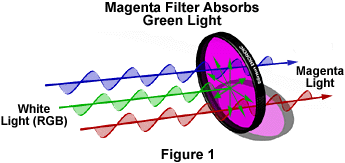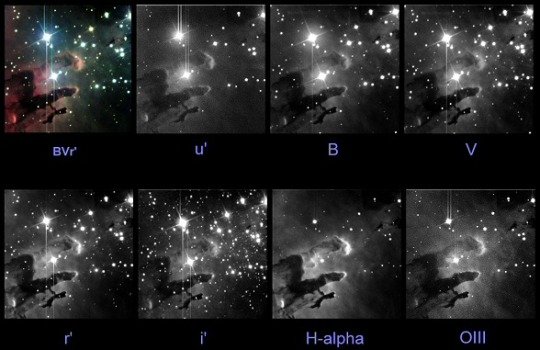Why does one image look better ?
Filters are very important in astronomical observation as they reduce glare and light scattering, increase contrast through
selective filtration, increase definition and resolution, reduce
irradiation and lessen eye fatigue.

Working of a magenta filter
Depending on which object you are looking, one chooses the appropriate filter. For instance the cover photo is without and withthe moon filter.
And on an amateur telescope they is how they are inserted.

Telescopes like the Hubble have plenty of these filters stacked on them. You can find a list of the filters here.
Some popular filters commonly used are as follows:
Red – R
Green – V
Blue – B
Infrared – i’
Ultraviolet – u’
Hydrogen Alpha – H-alpha
Oxygen III – OIII
LPR (Light Pollution Reduction)
Neutral Density filter and so on…
Now here’s an image of the pillars of creation captured in various filters:

Observe that the maximum number of stars are visible in the B, V and r’(infrared) filters. Therefore, combining these three image yields a standard image like the one you find online.
That being said, in our next post, we will run through a quick tutorial on how to access the Hubble archive and retrieve any image with any filter of your choice.
Have a good one!

